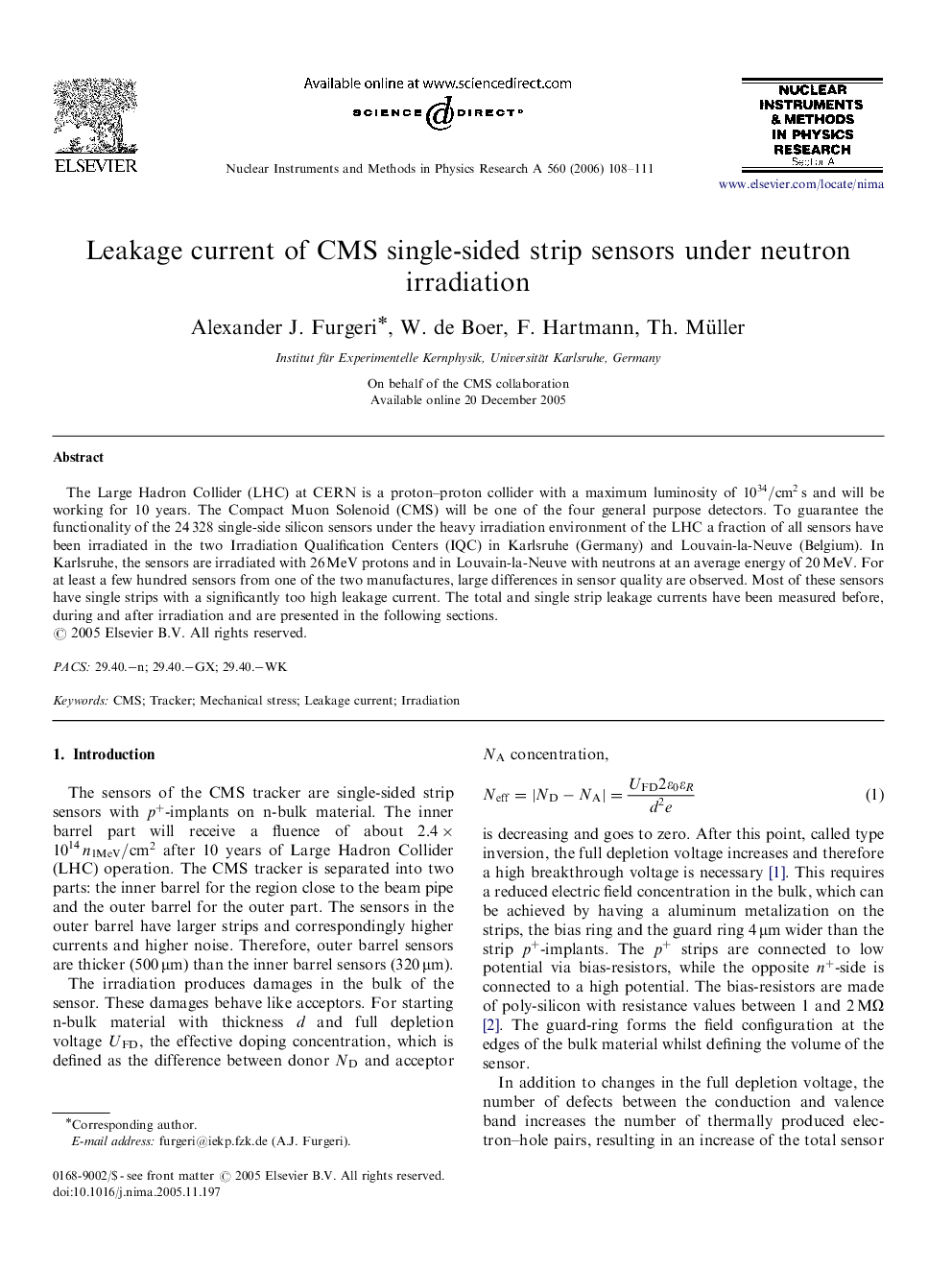| Article ID | Journal | Published Year | Pages | File Type |
|---|---|---|---|---|
| 1833384 | Nuclear Instruments and Methods in Physics Research Section A: Accelerators, Spectrometers, Detectors and Associated Equipment | 2006 | 4 Pages |
The Large Hadron Collider (LHC) at CERN is a proton–proton collider with a maximum luminosity of 1034/cm2s and will be working for 10 years. The Compact Muon Solenoid (CMS) will be one of the four general purpose detectors. To guarantee the functionality of the 24 328 single-side silicon sensors under the heavy irradiation environment of the LHC a fraction of all sensors have been irradiated in the two Irradiation Qualification Centers (IQC) in Karlsruhe (Germany) and Louvain-la-Neuve (Belgium). In Karlsruhe, the sensors are irradiated with 26 MeV protons and in Louvain-la-Neuve with neutrons at an average energy of 20 MeV. For at least a few hundred sensors from one of the two manufactures, large differences in sensor quality are observed. Most of these sensors have single strips with a significantly too high leakage current. The total and single strip leakage currents have been measured before, during and after irradiation and are presented in the following sections.
